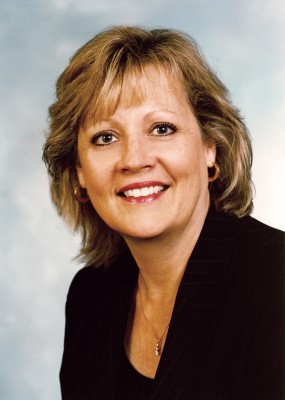
Audrey Van Luven’s knowledge of how hospitals work from a clinical perspective gives her unique insight on human resources (HR) decision making for the Christiana Care Health System, which has 10,000 employees serving residents of Delaware’s Brandywine Valley. On the most basic level, hospitals can’t function without staff. “In looking at improving efficiency and creating strategies to help drive where we need to go, I started with customer service for our employees,” Van Luven says. “Six years ago, we conducted an HR customer service survey, and the employee feedback was painful.”
As chief human resources officer, Van Luven is responsible for recruiting, benefits, compensation, incentives, employee relations, and labor relations. Her knowledge of the hospital system’s inner mechanics and how human resources drives the organization informs every decision she makes. “I used to think that everyone working in HR understood how complex the business of health care is, but there’s a learning curve,” she says. “This industry is more complex than many others.”
In the past few years, Van Luven has focused her energy on a broad-based redesign of her department, creating centers of excellence, a four-tiered approach that includes talent acquisition and workforce planning, employee benefits and wellness, compensation, and employee engagement, which covers everything from emergency-room strategy and design to disciplinary and termination counseling.
Feedback from the employee survey revealed a host of frustrations, including multiple phone numbers to reach HR staff, a convoluted phone tree, and leaving voice messages for the wrong person. “The system was confusing, and people were frustrated,” says Van Luven. “They wanted one phone number to call and a response from a warm body.”
Rolled out in 2006, the HR customer-service center now runs like a small, sophisticated call center. Staffed during regular business hours by six full-time employees, all with bachelor’s degrees and trained in core areas related to human resources, the department fields questions on benefits, wellness, continuing education, compensation, labor issues, and more. Employees can access HR online at any time of day to hear recorded information about the most commonly asked questions and where to find additional help. The department tracks length of calls, time to resolution, and the category and volume of questions. If a lot of questions come in for a specific topic, a new module is added to the online system, and call center staff receive training in that area. For instance, the call center recently started handling employee questions regarding payroll and reimbursing business expenses. Christiana Care also recently introduced a new payroll system, WorkDESK, simultaneously streamlining job codes and eliminating inefficiencies.
Looking at where health care is heading, Van Luven says it’s important to consider how HR will strategically support the organization. This means finding better ways to use current employees and acquire new ones. “How many people do we need, where do we need them, and what skills should they have?” These are questions Van Luven knows to pose. “We changed our model to operate in a strategic consulting capacity. We are now looking at recruiting and talent acquisition to support expansion.”
Christiana Care recently built an emergency clinic adjacent to another hospital system’s rehabilitation hospital. In staffing the new facility, Van Luven must consider that the rehab hospital may try to poach her physical therapists and rehabilitative nurses, and find ways to become the employer of choice for the region. “We are becoming strategic problem solvers and moving beyond day-to-day operations to create a workforce strategy,” she says.

Keeping in mind the nationwide nursing shorting from a decade or so ago, Van Luven is focused on employee retention. Christiana Care has magnet status, an award given by the American Nurses’ Credentialing Center (an affiliate of the American Nurses Association) to hospitals that satisfy a set of criteria designed to measure the strength and quality of their nursing. While magnet status helps attract qualified staff, keeping up with the standards required to maintain this status is challenging. For instance, magnet regulations require 80 percent of nursing staff to have bachelor’s degrees, raising the question of whether to recruit or train qualified employees. “If there are not enough nurses in the pipeline with bachelor’s degrees, what will we do?” Van Luven asks. “We need to think about that before it’s a problem.” The solution may be working collaboratively with outside organizations that train nurses, either to recruit new staff or provide tuition assistance for current employees to advance their education.
Now, Van Luven is focused on keeping Christiana Care Health System on track to meet the challenges of health-care reform from an HR perspective, as well as maintaining a corporate culture with employee customer service at the forefront. “In the past, HR has been mostly about paper-pushing,” she says. “We were the panty-hose police. I want to be at the table working on real stuff, not administrative problems and dress codes.”

